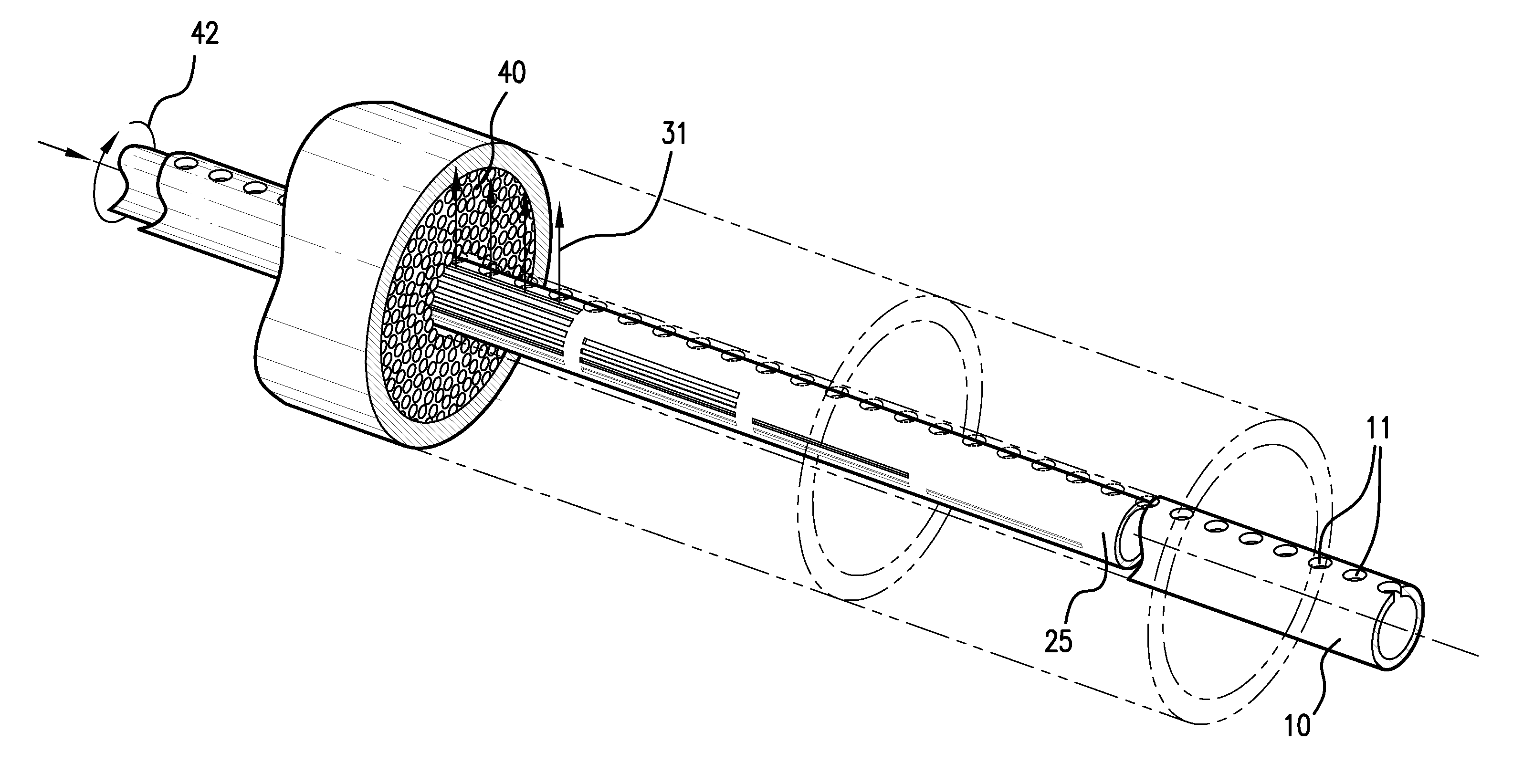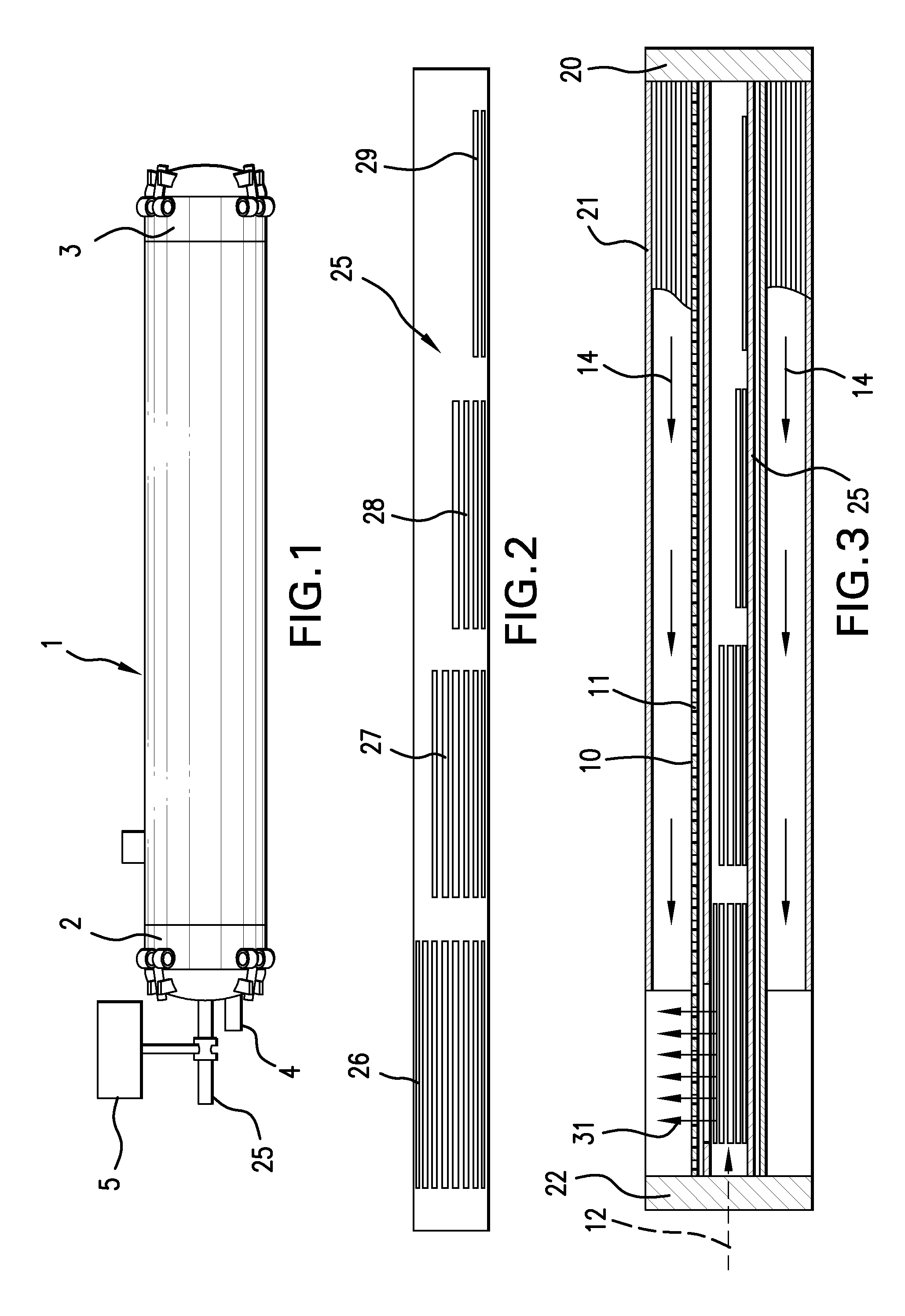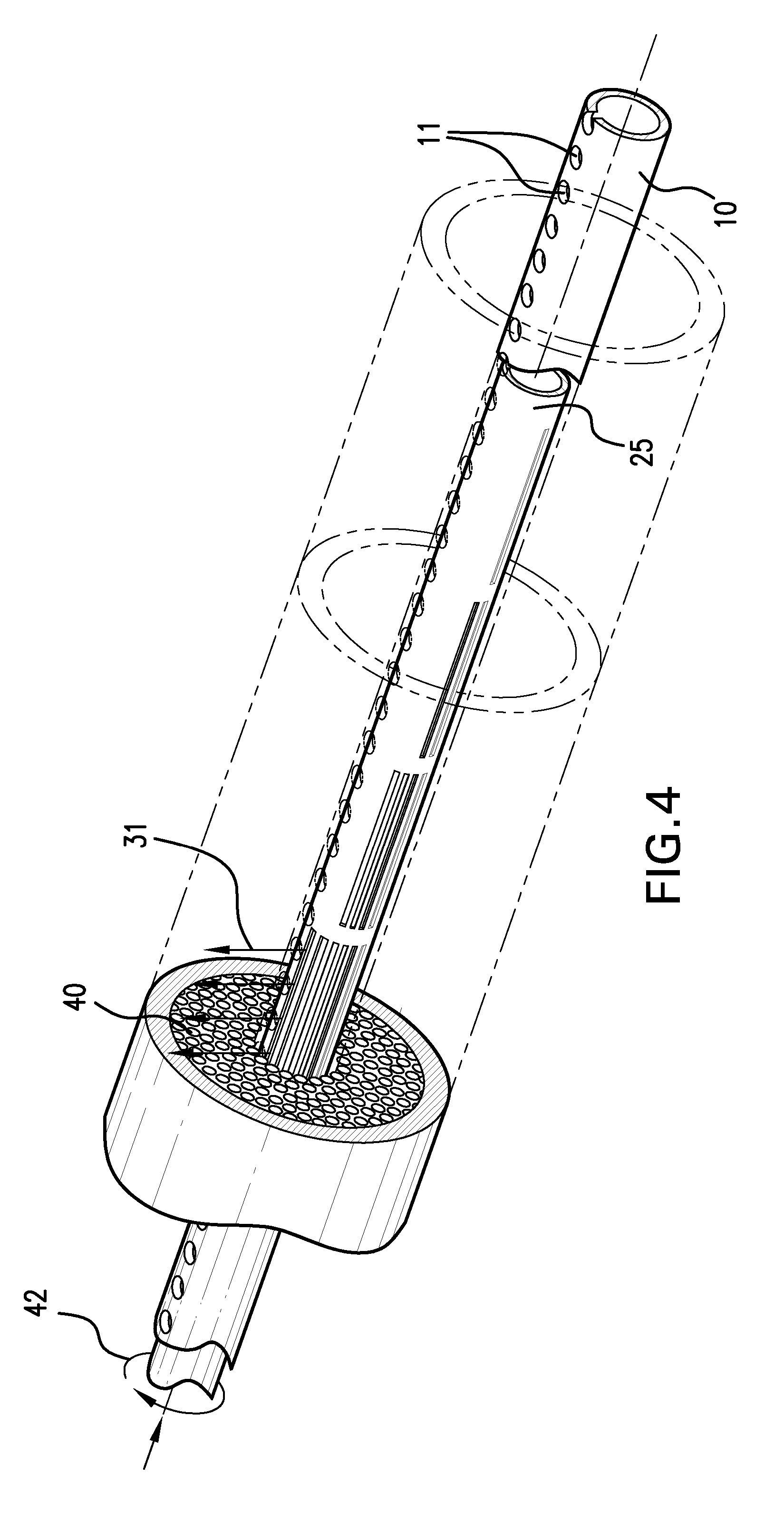Air separation membrane module with variable sweep stream
a technology of air separation membrane and sweep stream, which is applied in the direction of membranes, auxillary pretreatment, separation processes, etc., can solve the problems of optimum performance of gas-separation membrane modules and sweep stream that would not justify the effor
- Summary
- Abstract
- Description
- Claims
- Application Information
AI Technical Summary
Benefits of technology
Problems solved by technology
Method used
Image
Examples
example 1
[0054]This Example simulates the take-off or landing phase, i.e. when the aircraft is at a low elevation. The pressure is assumed to be 45 psig. The simulation was run so as to generate a product (retentate) gas having oxygen concentrations of 12%, 7%, and 5%. This range is a typical one for inerting of fuel tanks. Even when the oxygen concentration is as high as 12%, an explosion of the fuel tank is unlikely.
[0055]The simulation was operated first without simulating any sweep stream. The results are as follows:
[0056]
Oxygen ConcentrationProductBleed Airin Product GasFlowRequired12% 378 scfh527 scfh7%187 scfh330 scfh5%141 scfh280 scfh
[0057]The “bleed air” is the feed gas, which is taken from the high-pressure ambient air produced by the turbines. The feed gas is what is directed through the bores of the fibers, to produce an oxygen-depleted retentate gas. The table shows the required flow rates of bleed air to produce the indicated rates of product flow, for each concentration of oxy...
example 2
[0063]This Example was designed to investigate a climb or descent, wherein an aircraft climbs from sea level to 35,000 feet, or descends from that altitude to sea level. For simplicity, an intermediate elevation of about 15,000 feet was chosen, where the bleed air pressure is assumed to be 53 psia and the permeate exits the module at about 8.5 psia.
[0064]The following tables show the results of the simulation. The module was assumed to be the same as in Example 1.
[0065]The following table shows the product flow and bleed air requirement for a module in which there is no sweep gas:
[0066]
Oxygen ConcentrationProductBleed Airin Product GasFlowRequired12% 439 scfh589 scfh7%217 scfh359 scfh5%163 scfh300 scfh
[0067]The following table shows the product flow and bleed air requirements where the module is swept with low-pressure, ambient air (21% oxygen).
[0068]
Product OxygenProductBleed Air% of ShellLow PressureConc.FlowRequiredSide SweptSweep Flow12% 677 scfh850 scfh100%750 scfh7%288 scfh440...
example 3
[0071]This Example investigates the case of high-altitude cruise. The aircraft is assumed to be at about 35,000 feet. The bleed air pressure is assumed to have dropped to about 45 psia, and the permeate will exit the module at about 3 psia. The module may be operated at fairly low oxygen concentration, less than about 7%, during this portion of the flight, so as to inert the fuel tanks sufficiently to compensate for an influx of ambient air (21% oxygen) when the aircraft begins to descend. The details of the module are the same as in the previous Examples.
[0072]The following table shows the product flow and bleed air requirement for a module in which there is no sweep gas:
[0073]
Oxygen ConcentrationProductBleed Airin Product GasFlowRequired12% 575 scfh730 scfh7%287 scfh432 scfh5%216 scfh356 scfh2%126 scfh256 scfh
[0074]The following table shows the product flow and bleed air requirements where the module is swept with low-pressure, ambient air (21% oxygen).
[0075]
Product OxygenProductB...
PUM
| Property | Measurement | Unit |
|---|---|---|
| angle | aaaaa | aaaaa |
| angle | aaaaa | aaaaa |
| angle | aaaaa | aaaaa |
Abstract
Description
Claims
Application Information
 Login to View More
Login to View More - R&D
- Intellectual Property
- Life Sciences
- Materials
- Tech Scout
- Unparalleled Data Quality
- Higher Quality Content
- 60% Fewer Hallucinations
Browse by: Latest US Patents, China's latest patents, Technical Efficacy Thesaurus, Application Domain, Technology Topic, Popular Technical Reports.
© 2025 PatSnap. All rights reserved.Legal|Privacy policy|Modern Slavery Act Transparency Statement|Sitemap|About US| Contact US: help@patsnap.com



